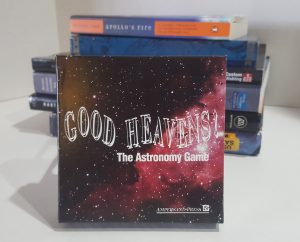Astronomy is a topic that has captured imaginations for time immemorial. It’s likely that our earliest ancestors looked to the sky in wonderment, then tied it to the thing most precious to them: stories, family, and gods.
With this sense of awe already in our hearts and minds, how can you keep that fresh while teaching these classes? Here are 4 ways we use at Insanitek to go deeper, keep the creativity, and enjoy this ancient science.
Add elements that keep science fun and fresh.
This might mean you can tap into their creative side and have them draw or make models, tap into their competitive side and turn remembering vocab of all the parts of an eclipse into a game that mimics the shape and rotation of planets, or making it a social event by heading to a local astronomy club.
One of the things we like to do at Insanitek is use all three of these elements. We have the kids form their own “club” with a small group. This group is in charge of a topic that they will share later. They come up with a game that will help demonstrate the concepts and vocab (with the instructor’s help as necessary). They also come up with a model to help with their presentation.
Please note that we go well beyond the planets and moon in our classes. We talk about parabolas, ellipses, pulsars, and other objects out in the ‘verse. If this is something you feel comfortable with in your classes, please do. The students seem to love to get beyond the mundane and be challenged. This leads us to our second tip.
Integrate new and old things, don’t just go over the same facts over and over again.
A bit of review and building off previous years is great, but we found that students get bored insanely easy when you take it too far. So, explore the history of the topic, discuss the potential futures of the research in the area, or even use it in a sci-fi style skit. (No one said you couldn’t combine English class with science except maybe a really stuffy, boring public school.)
One of the ways we like to do this is in lecture is to give a bit of background about an event, a person, or even the politics surrounding a particular event. For example, when talking about the moon, we talk about the space race and politics surrounding the whole event. It makes the topic come alive just a little more for the students while they also get a little extra knowledge.
Of couse, you could use the writing a sci-fi short. That plays well with the next idea you can integrate.
Intersperse a few techniques to increase deeper thinking.
Nothing gets the imagination going quite like the phrase, “What if…” What if you were in charge of building a colony on the moon? What if you were choosen to go to Mars? What if you had to find out where a signal was coming from beyond our solar system? What if you could go to Tabby’s Star to explore the unusual light fluctuations?
These are great as class warm-ups or just a way to have a bit of fun. Honestly, if you want to take it further, you can challenge them to do a full on essay if you really wanted to. We use them as a class warm-up to get people thinking about the possibilities in life and encourage off the wall thinking.
 Trivia games that reward knowledge and geekery.
Trivia games that reward knowledge and geekery.
Sometimes you gotta kick back and show off your brains. Sometimes you need a review session. Do both at the same time means a trivia game where you get points for correct answers and a reward at the end.
Some of the cooler things I’ve seen combine basketball and trivia. This means the students answer a question. If they get it right, they get a chance to take a shot for points. Highest point team (or player in a small classroom) would get a reward. This could be candy, a small gift, or even rights to movie night (for homeschoolers).
At Insanitek we’ve been using these nifty card sets we got from a Detroit school that condensed and shut down. They are from the days that Pluto was still a planet, but the questions in them really make the students think, know their history, and have some fun.
Learn more about this game and enter a chance to win it over at the giveaway.
